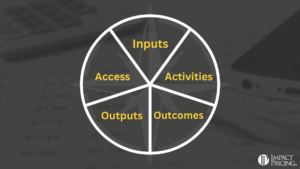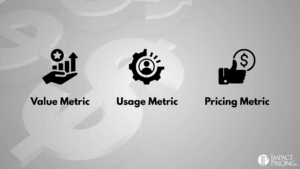You can listen to the full audio version of this blog we call — Blogcast.
Buyers trade money for Value. In B2B, value is measured in incremental profit. Let me repeat: Value is Incremental Profit to your business customers. Prospects only buy from you because they believe buying and using your product or service will provide them multiple times more profit than your price.
This profit, or VALUE, comes in one of three forms: increased revenue, lower costs, or reduced risk. What follows is a brief overview of how your customers think about each of these. This should help you decide which to emphasize in your sales and marketing if you have a choice. As an example, imagine you are selling Zoom services. Your potential client has $100M in revenue with 25 salespeople, so they average $4M apiece.
Increased Revenue: All companies want growth. This is the most attractive of the three types of value. It’s also often the largest, by far. In fact, the numbers are often so good they are unbelievable by your customers. If possible, this is the one you should lean on hardest.
In our Zoom example, what if your client adopted Zoom for sales calls instead of driving or traveling to see clients as often? Each salesperson could be 20% more efficient (made up numbers), closing 20% more deals. This implies 20% more revenue or $20M. At a 10% gross margin, that’s $2M more profit.
Lower Costs: CFOs and COOs tend to like cutting costs because they often feel real. Customers know their current costs and can easily imagine how much they can be reduced.
In our example, each salesperson averages about $20,000 per year in travel expenses. With Zoom, they may be able to cut that in half. Hence, the company would save $10K for each of 25 salespeople or $250,000, all profit.
Reduced Risk: This is the least tangible and the hardest to sell. It’s the same thing as selling insurance. Nobody can insure themselves for everything. Rational economic theory says you should take the probability of an event times the cost of that event to yield an “expected value”. However, most companies aren’t that rational. Plus, it’s practically impossible to know the probability of an event.
In our example, if a salesperson violates certain regulations in the sales process, the company could be fined $1M by the government. They estimate that there is a 1 in a thousand chance that could happen when they make face-to-face calls. The expected value of this risk is 1M/1K = $1,000 per salesperson or $25,000 expense for the company. If they could monitor and coach the salespeople on Zoom, that risk would be reduced by half. Hence, Zoom would be worth $12,500 to reduce this risk.
Although reduced risk is the hardest to sell, that’s the main value proposition for some companies, like cyber-security. However, if you can communicate enough value using increased revenue and lower costs, I recommend not trying to quantify the value of reducing risk, unless your buyer asks for it.
My recommendation is to deeply understand where your products or services deliver value. Remember, in B2B, Value is incremental profit, so put it in monetary terms. Of course, your customers are different, but use examples. What are the typical results your customers receive?
My second recommendation is to spend time thinking hard about increasing your customers’ revenue. It’s common for companies to focus heavily on cost reduction and not spend time on revenue growth, even though they could. Revenue growth is what your customers’ CEOs value the most.
Share your comments on the LinkedIn post.
Now go make an impact!
 Tags: pricing, pricing skills, pricing value, value
Tags: pricing, pricing skills, pricing value, value













